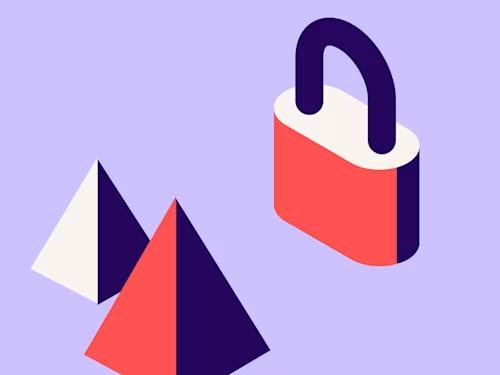
8 Modern HR Solutions for a Remote Workforce
Modern organisations must have HR solutions to manage remote workers. Here are 8 solutions for effective communication, engagement and document processing.
Table of contents

2021 will be the first year that a lot of organisations have begun with a workforce that is mostly or entirely remote. HR solutions may have been partially successful in 2020, but it's no longer acceptable for a modern organisation to be without a plan for managing employees who work outside the physical office. It's time to develop a concrete plan for long-term success with remote workers.
The good news is that organisations are already making important transitions to support remote workforces, and we've seen proof that it's possible to manage off-site employees just as effectively as on-site workers. HR solutions exist to solve the problems presented by decentralised employees – but it's not a viable strategy to assemble a patchwork of point solutions to solve individual pain points as they pop up. HR needs to develop a sound strategy for remote workers and build a robust central platform to communicate with employees and allow them to engage with the organisation.
As your organisation makes plans to support remote workers, there are a few critical types of tools to consider:
Communication tools
Without a common in-person meeting place, it's harder to get information to and from employees. HR teams need technology that will keep those communication lines open for individual employees, teams, and the organisation at large. A simple mass email to an alias isn't an effective solution to this problem; you need to reach employees through a more personal channel and give them an opportunity to communicate back if they need to.
Beyond simply establishing new lines of communication, HR teams also need to set new expectations about the usage of these tools. That includes specifics about who should be using them, how often they should check for information, and appropriate response times. It's likely that the move to support remote employees will require a lot of organisational change. Good HR teams will look for new ways to keep all employees communicating freely.
Employee engagement tools
Communicating with employees is the first step, but effective HR teams must also empower employees to take action. Some communication will require employees to do more than simply consume information. They may also need to sign a document, complete a training, attend a virtual meeting, provide personal information or select new benefits.
A traditional office setup would give the HR team plenty of in-person opportunities to remind employees of their responsibilities and how to take action on them. For particularly complicated actions, there could be training sessions or office-hours to provide one-on-one consultations. It's still important for HR teams to engage with employees on these actions, they just need to adapt to remote-friendly workflows.
Document tools
At the junction of communications tools and engagement tools are agreement tools such as electronic signature. No matter what happens with your workforce, your employees will need to continue signing documents (offer letters, tax forms, compliance paperwork, exit forms and more) and they need a simple, secure, enforceable means of doing that. DocuSign eSignature offers a cost-efficient and secure way to handle these electronic agreements. Business documents aren't final without a recognised signature, so it's imperative to give employees a uniform way to complete those agreements from anywhere at any time.
As your HR team makes plans to support a partial or all remote workforce, think about the communications and engagements you'll need to have with your employees and consider what the right tools are to enable those interactions. Here are eight modern HR solutions that we recommend considering, but keep in mind the needs of your employees as you read through the list.
8 Modern HR Solutions for a Remote Workforce
Video conferencing—In the absence of face-to-face meetings, video conferencing solutions like Zoom offer the next best alternative. Moving forward, establishing solid video conferencing practices is an easy way to include employees in any location.
Bulk distribution—Successful HR functions build extremely efficient workflows for communicating in a one-to-many fashion inside the company. That might include the entire employee base, certain teams, specific office locations or designated types of workers. No matter how many recipients there are, it's crucial that HR can quickly communicate policy updates to exactly the right group people with the most efficiency and track progress along the way.
SMS delivery—It's not always enough to communicate via email. Whether for security reasons or personal preference, SMS can be the better choice. Modern HR teams need the ability to communicate via SMS when it's appropriate to do so. This is especially useful for external workers or new hires who don't have access to a company laptop, email address or internet while on the job.
Process & HR automation—HR teams exist to serve employees, not waste time on paperwork and administrative activities. Modern tools can automate steps in common HR workflows, minimising the amount of human effort needed and reducing opportunity for human error. Integrating tools like DocuSign with Salesforce will save staff time getting employee agreements sent and signed, streamlining the entire HR process.
Prebuilt digital templates—An important part of daily HR work is to create documents and send them to employees. If each of those forms has to be created from scratch, these teams are wasting time. A library of prebuilt templates is an easy way to minimise the amount of time needed to generate common HR documents.
Employee training—Some messages require more than simply sending an email, chat or SMS to employees. For interactive training sessions, HR teams need a platform to make sure the right information is being absorbed and an accurate record is made of which employees attended which sessions.
Contract management—When employees complete paperwork, those documents need to be stored in a single digital repository— a contract management tool. DocuSign Contract Lifecycle Management (CLM) offers a comprehensive solution to streamline and simplify contracting processes, making it easy to find existing contracts and even alert HR teams to important milestones in a contract's lifecycle.
Wellness/support resources—Employees need access to wellness and support tools that they may find useful and it's simply not scalable for HR to serve as the gatekeeper for these resources. A platform that empowers employees with self-service access to these tools is an easy way to make sure each person at the organisation is getting the help they need.
Learn more about all the ways your HR team can communicate with employees and keep them engaged. Check out Docusign for Human Resources for stories about innovative HR leaders, data about today's HR agreements and more information about the tools you need to create a seamless remote workspace.
Related posts
Docusign IAM is the agreement platform your business needs



